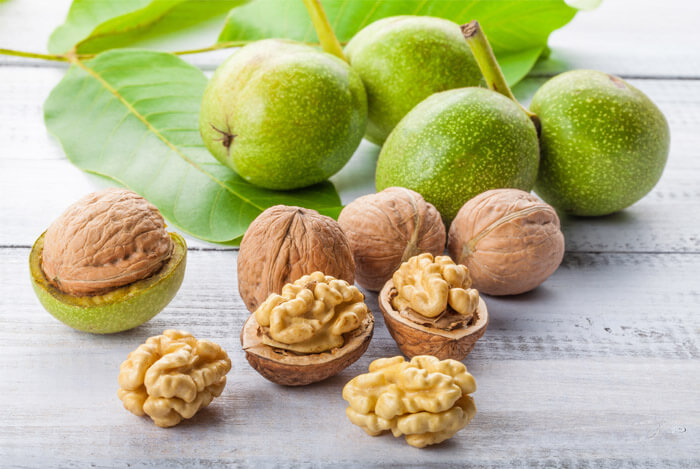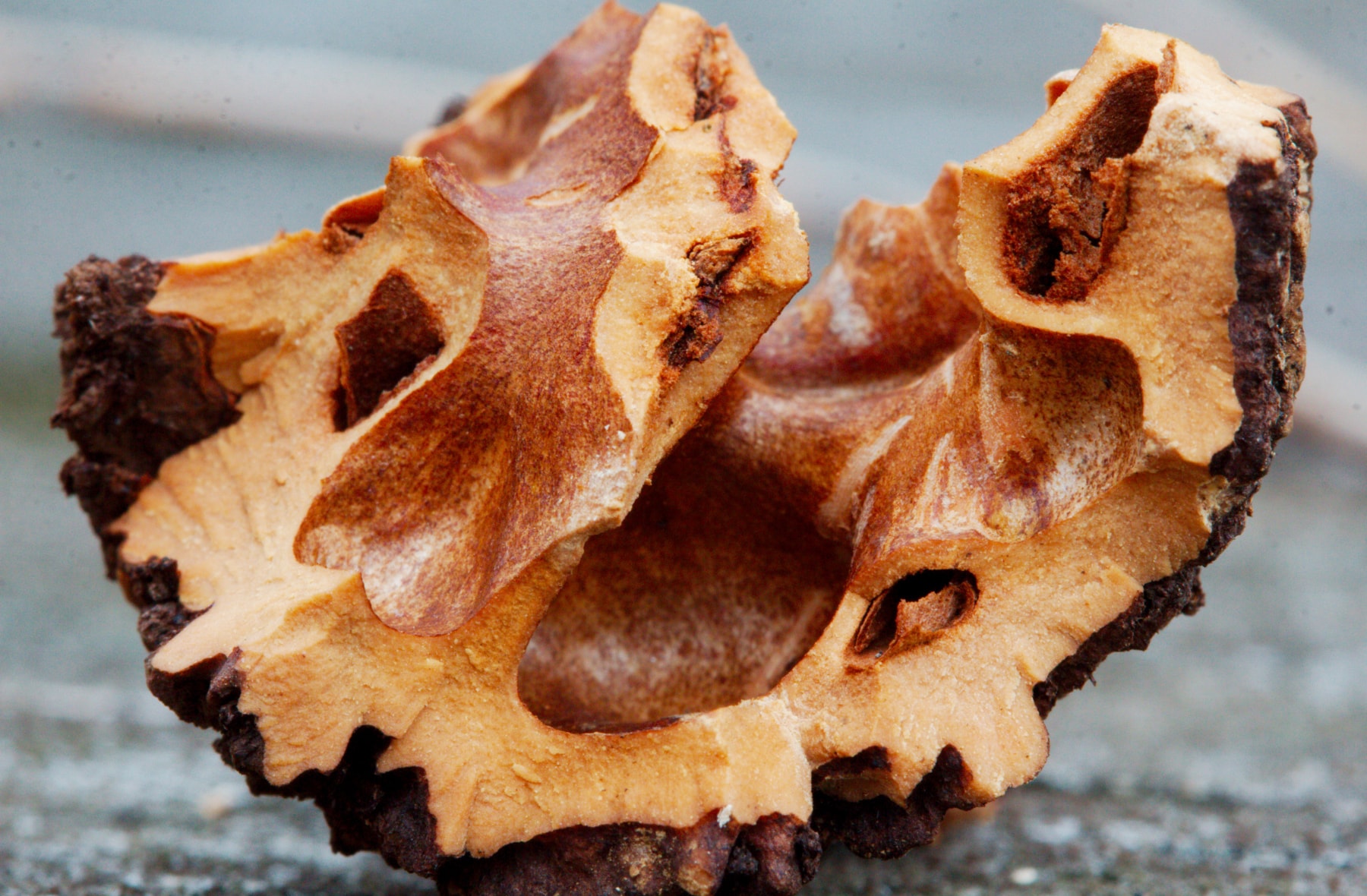This is Nuts! Fun Health Facts From Canadian Health&Care Mall
Besides the numerous references to the known hypocholesterolemic properties of walnuts, in the literature we can find some evidence about their protective effect against prostate cancer. These benefits are mainly due to phytosterols, molecules very similar to cholesterol in plants. This analogy between the two molecules causes phytosterols to reduce cholesterol levels in the blood, reducing the absorption of lipids in the intestine. In addition, some phytosterols have a structure very similar to that of androgen hormones (which randomly derive from cholesterol). Therefore, the phytosterols can bind to androgen receptors; however, not being perfect, this bond produces a much more limited endocrine response. Now, since many prostatic problems, including benign hyperplasia and prostate cancer, are aggravated by high levels of androgens, the intake of phytosterols through walnuts could be a valuable aid in the prevention of these diseases.

Not surprisingly, some studies paint walnuts as a valuable aid in the prevention of breast cancer. Many forms of breast cancer, in fact, are favored by high levels of estrogens, hormones derived from cholesterol for which certain phytoestrogens show a good affinity.
Allergic reaction to nuts by sexual contact
Documented in 2007, the episode of allergic reaction by contract / sex transmission has intrigued the doctors to such an extent as to make it an experimental publication. The title, for those wishing to deepen the reading, is ‘Dangerous liaison: sexually transmitted allergic reaction to Brazil nuts’.
This is the case of a 20-year-old English woman who, despite suffering from an allergy to Brazil nuts, has not established that her partner’s diet is totally lacking. Obviously, it is not a lack then so serious, indeed… probably would not have occurred to anyone else! In this regard, we recall that Brazil’s nut allergy is the second most frequent cause of walnut allergy in the United Kingdom; but, to think about it, even with this awareness we could have suspected a similar event. The poor girl, after a sexual relationship with her partner, has developed a symptomatology entirely attributable to an allergic reaction. Obviously, after the disappearance of diffuse urticaria and dyspnoea (difficulty breathing, albeit mild), he immediately proceeded to investigate the recent food behavior of the partner who, yes, had made use of Brazil nuts!
At first glance it might seem like a ‘weekly magazine hoax’, if it were not that following the Prick Test of the ‘reactivity to the sperm of the boy fed with Brazil nuts’ was a clear ‘positive’; obviously, the result was further verified with a sample of ‘semen taken after a diet not containing Brazilian nuts’, to which he obtained an equally unequivocal ‘negative’. Attention then, the food allergy could haunt you even between the sheets!
From virtual reality to ink and nib: the husk makes its comeback!
A touch screen, ergonomic keyboards, joysticks, mice and other contemporary devilries. Don’t kids commit themselves to gadgets nowadays? Are they not distracted and unmotivated? This is a question of stimulation! It is increasingly shown that interactivity makes the mind slack, the hyperstimulation puts our brain on the defensive, which, for its part, does not know how to apply itself!
The husk, a natural pigment, in addition to being edible (for once, used for nocino, a sticky dark brown liqueur prepared using unripe walnuts) and used in a thousand types of colors (from hair to furniture) has recently been readjusted in ‘creative workshops for children’ to improve the stress nervous and mind-hand exercise. In this way, the new generations learn to refine the lost manual skills, necessary to write quickly in italics. A blow to life for self-esteem and to recover the elasticity of the younger minds increasingly stiffened by computers.

As mentioned, the walnut husk is the pulp inside which the entire edible part of the plant (ie the seed we commonly call ‘walnut’) is immersed. In other words, the husk can be considered as the pulp of the nut tree fruit. When the fruit is ripe, the husk is green. This color, with the advance of time, darkens more and more by the tannins contained in it, reaching the typical dark brown color.
The walnut husk contains several active ingredients inside, among which stand out tannins, flavonoids and naphthoquinones such as juglone. Juglone – present in both the husk and the walnut leaves – is endowed with allelopathic properties, as it is capable of conditioning the growth and development of other living beings. In particular, the juglone prevents the growth of other botanical species with which it comes into contact. The juglone is also able to inhibit fungal growth and has antibacterial and astringent properties (the latter, attributable to the tannin content). In addition to the pigmenting properties, the walnut husk also recognizes antiseptic, vermifuge and keratinizing properties.
Folk medicine ascribes numerous properties to the walnut husk and its derivatives, as well as to the leaves of the plant. For example, in Chinese folk medicine, the husk and the walnut leaves are used to treat a wide variety of disorders, such as asthma, constipation, low back pain and even impotence. The coloring properties of walnut husk were known since antiquity. In fact, the Persian people used to use preparations based on walnut husk in order to dye fabrics and carpets. Currently, walnut husk is traditionally used in the food industry as a coloring and flavoring in the production of liqueurs (nocino). Its health applications are also interesting, since the oil is traditionally used to protect and tan the skin.
This characteristic is exploited by bodybuilders during competitions, to highlight the muscular details and take on a more defined appearance. For the same reason we explain the use of walnut husk as a colorant to give the hair red-brown reflexes. In truth, it would be more correct to state that walnut husk acts more as a reflexive agent on the hair and not as a true dye. However, due to repeated applications, the walnut husk is still able to darken the light hair. Moreover, often, the dried and powdered walnut husk (INCI nomenclature: Juglans regia shell powder or Juglans regia seed coat powder) is mixed with different types of henna in order to obtain more or less intense reflections and / or dyes on the hair. (for example, to cover white hair).
The oil obtained from the walnut husk is used in aesthetic and cosmetic as a coloring agent to give the skin a tanned look and to enrich the hair with brown highlights. The coloring properties of the walnut husk depends on the naphthoquinones it contains, among which the juglone is undoubtedly the most representative. This substance reacts with the keratin present in the hair and in the epidermis, forming a brown-colored pigmenting complex.
Although the tanning oil conferred is fictitious, in the presence of ultraviolet radiation, the naphthoquinone-keratin complex acts as a selective filter, shielding the skin from UV-B rays on one side and accelerating on the other the ray-induced melanogenesis GRAPES. For this reason, walnut oil is widely used in the formulation of solar products. However, it should be noted that in spite of its protective and partially shielding action, the use of the oil of the husk can in no way replace the use of suitable sunscreens.
Despite the walnut husk and the powder obtained as a result of its drying products are easily available, their use must still be made with some precaution. In fact, walnut husk can be toxic to some types of animals, such as dogs and horses. Therefore, who owns these animals, must handle and keep the walnut husk and its derivatives carefully, in order to avoid poisoning. Moreover, as can be easily deduced, those suffering from allergies to nuts or other types of dried fruit should in no way use walnut husk, in order to avoid the onset of dangerous allergic reactions.
Venereal illnesses? Once they treated themselves with the walnut leaf!
Let’s start immediately by specifying that the news is nicely reported by a text called ‘Annual University of Medicine, Volumes 221-222’. It is more a question than a pharmacological advice and, for the diseases in question, it is strongly suggested to refer to a doctor.
Ramazzini, Mérat, Jourdan, Pollini, Cadet, etc., all great experts in the pharmacopoeia of the ‘700 and’ 800 (Italian and French nationality), regularly used various components of the walnut tree to cure certain disorders. In particular, it seems that the juice of walnut leaves (mixed with celery and buckbean from the beginning, and then also with extract of walnut leaves, angelica, cardosanto, soap and jelly powder) was a formidable ingredient for the synthesis of certain anti-venereal pills or syrups or teas; indeed, it seems that Lorry and Costilhes used large quantities of it in the customary therapy of the ‘female syphilectomy of S. Lazzaro di Parigi’ (a clinic specialized in the treatment of syphilis).
Obviously, again according to what is mentioned in the text, the properties of the walnut tree do not stop here. It is also one of the main drugs used as a tonic, digestive, anti-ispetic, sudoriferous, vesicatory and in the treatment of scrofulous or scrofula, caused (today we know) from the mycobacterium of tuberculosis. In this regard, it is very curious to note how, on the other side of the planet compared to central Europe (more precisely in Mexico), walnut was used from ancient times in traditional medicine to treat tuberculosis, pathology of the respiratory tract however caused by the same microorganism responsible for tuberculosis. Will it be a case?






